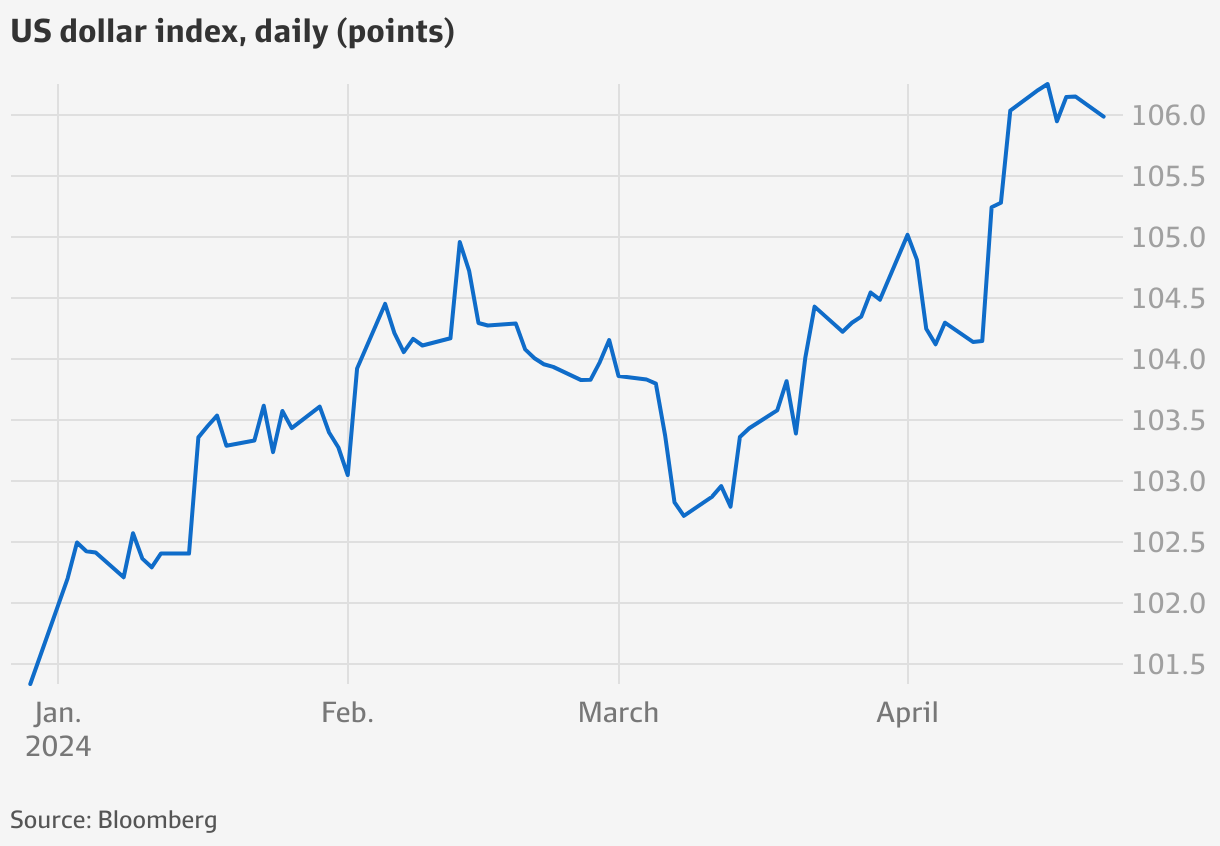
NAB last week joined a growing number of banks tipping the greenback to remain “stronger for longer”, triggering a reduction in Aussie dollar forecasts. NAB cut its year-end projection to US69¢, from US72¢, while Goldman Sachs lowered its six-month target to US65¢, from US70¢.
The prospect of a weakening Australian dollar threatens to fan inflationary pressures given a lower exchange rate increases the prices of imports and lowers the value of exports in their respective final markets.
Morgan Stanley highlighted that import price disinflation has been important in lowering Australia’s headline consumer price index over the past year. That means broader weakness in the local currency would complicate the RBA’s task of bringing inflation back to target.

The RBA estimates that a 10 per cent depreciation in the Australian dollar raises CPI by 0.20 percentage points in the first year, and a full percentage point over three years.
The change in relative prices could also have implications for economic growth given a lower Aussie dollar makes exports more competitive and imports less so.
This has different sensitivity across industries, according to Morgan Stanley. Export volumes typically increase more in services and manufacturing when the Aussie dollar falls, but volumes in the resources sector are relatively insensitive.
Overall, a 10 per cent depreciation in the local currency is estimated to boost GDP by around 1.5 percentage points over two years.
While the RBA will be monitoring the Aussie’s move against the greenback, the central bank is typically more focused on the trade-weighted index (TWI), which measures the value of the Australian dollar against the currencies of its major trading partners.
Indeed, the RBA has only flagged exchange rate concerns over the past year when there has been weakness in the trade-weighted Aussie dollar. That was the case in May last year when the central bank resumed rate rises.
Ripple effect
Morgan Stanley believes the RBA would be worried if the TWI dropped below 60, a level which it has only fallen sustainably below twice in the past two decades – during the global financial crisis and the pandemic.
“We are currently still 2 per cent above this level and so do not expect immediate concern from the RBA,” said Morgan Stanley equity strategist Chris Nicol.
The US dollar’s rally has also created headaches for countries across Asia, particularly its gains of 9.6 per cent against Japan’s yen and 6.5 per cent versus South Korea’s won.
Those moves led officials from both nations, which are key US trading partners, to meet urgently with US Treasury Secretary Janet Yellen last week in hopes of stemming the slides.
Meanwhile, the Indonesian rupiah has fallen to the cheapest in four years, the Taiwan dollar is the lowest level in eight years, the Malaysian ringgit is the lowest in 26 years, and the Indian rupee is at a record low to the dollar.
A stronger greenback is challenging for developing economies, particularly those that have US dollar-denominated debt that becomes more expensive to pay back as their home currency weakens.



